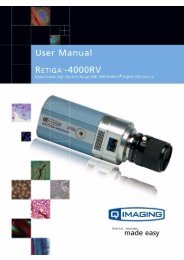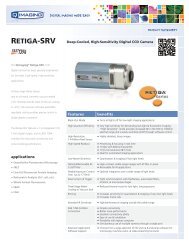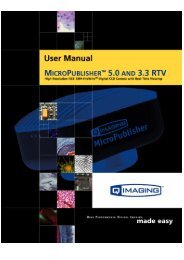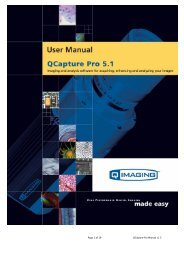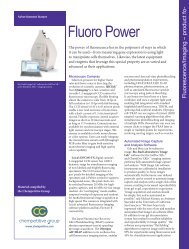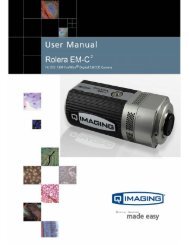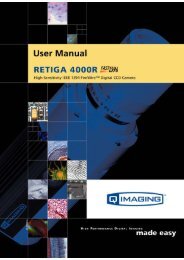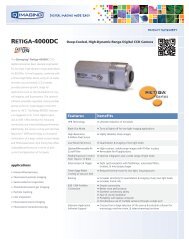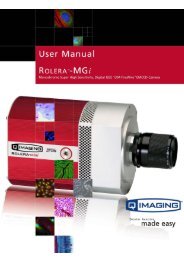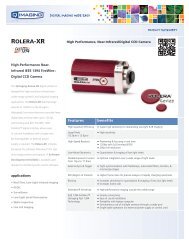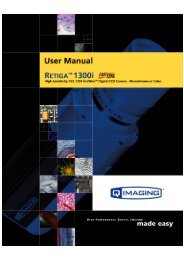Retiga 1300R Fast 1394 User's Manual - QImaging
Retiga 1300R Fast 1394 User's Manual - QImaging
Retiga 1300R Fast 1394 User's Manual - QImaging
You also want an ePaper? Increase the reach of your titles
YUMPU automatically turns print PDFs into web optimized ePapers that Google loves.
Input Signals<br />
In order to use the External Trigger Port correctly and ensure external triggering operation for your<br />
camera, you need to supply at least 4 input signals through the mini din receptacle. Pin 1 always needs<br />
to be powered at a 5V potential, with Pins 4 and 6 always connected to ground. The input signal to<br />
begin triggering the camera is through Pin 2 and should be a 5V TTL pulse.<br />
Output Signals<br />
There are two output signals provided on the <strong>Retiga</strong> <strong>1300R</strong> <strong>Fast</strong> <strong>1394</strong>, SYNC A and SYNC B.<br />
SYNC A: This signal indicates the readout time of the camera and this signal is active high. A user<br />
could monitor this signal as a means of knowing when to trigger the next frame.<br />
SYNC B: This signal has two modes of operation which can be selected in software. Refer to the<br />
QCAM SDK API documentation for further information on setting these parameters.<br />
Signal Timing<br />
Expose Mode: If this modes is selected, the signal will indicate the exposure pulse of the<br />
camera. This signal is active high and may be used to synchronize an external shuttering<br />
device.<br />
Trigger Mask: If this mode is selected, the signal will indicate the time at which another<br />
trigger signal will not be accepted by the camera. This signal is also active high.<br />
Trigger<br />
Expose<br />
Integration Time<br />
SYNC-A<br />
Readout Time<br />
Figure 3— External Trigger Signal Timing<br />
• The integration time corresponds to the length of time that the CCD has been programmed<br />
to be exposed to the image.<br />
• The readout time corresponds to the time required to readout the CCD.<br />
20



